Ħaġar Qim and Mnajdra are Neolithic megalith temple complexes, located on the island of Malta. Built over 5,000 years ago in the fourth millennium BCE, these temple complexes are among the oldest freestanding structures in the world and the most ancient religious sites on earth. Together they form the Ħaġar Qim & Mnajdra Archaeological Park, and are among several similar structures designated a UNESCO World Heritage Site in 1992, called the "Megalithic Temples of Malta." Ħaġar Qim consists of a central building and the remains of at least two other structures built from approximately 3600-3200 BC, while Mnajdra consists of at least three temple structures built from approximately 3600-2500 BC.
Although each temple is different, their architectural design is similar to most other Neolithic temples on the island. This design typically consists of a large, elliptical forecourt in front of a monumental concave facade, fronting a series of C-shaped rooms or apses. These apses are arranged on each side of a central paved space. Walls and slabs with square portholes cut through as doorways were used to screen off the apses, and some appear to have been aligned astronomically to match the Winter and/or Summer solstices. The surviving horizontal masonry courses indicate the monuments had corbelled roofs, which was a sophisticated solution for its time. Decorative features of the temples include panels with drilled hole decorations and bas-relief panels depicting spiral motifs, trees, plants and various animals.



A scale model of Ħaġar Qim, showing its solar alignment.

Ħaġar Qim.

The main temple entrance of Ħaġar Qim.

Entrance to the main temple of Ħaġar Qim.
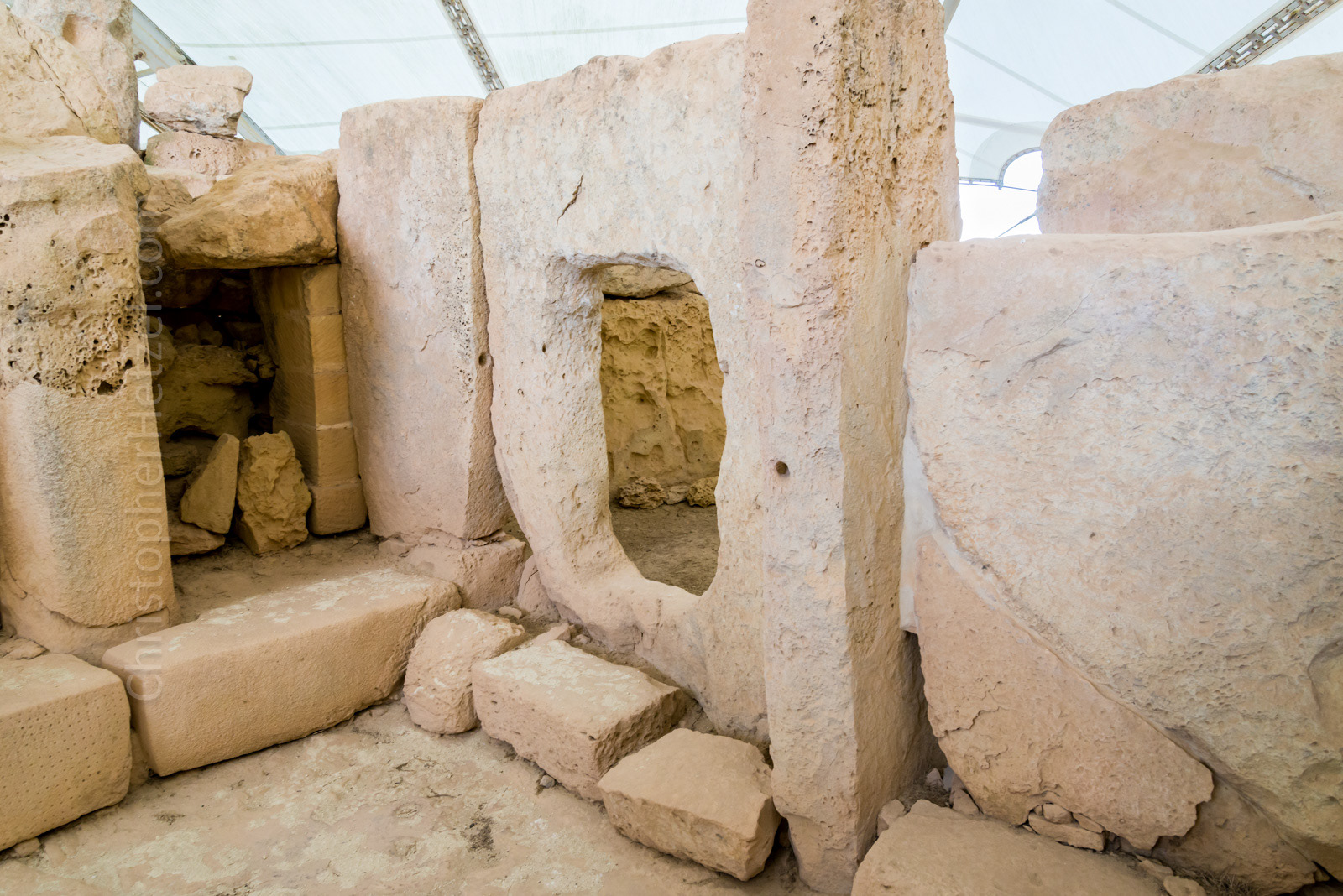
Portal doorway into an apse of Ħaġar Qim.

Carved, free-standing altar.
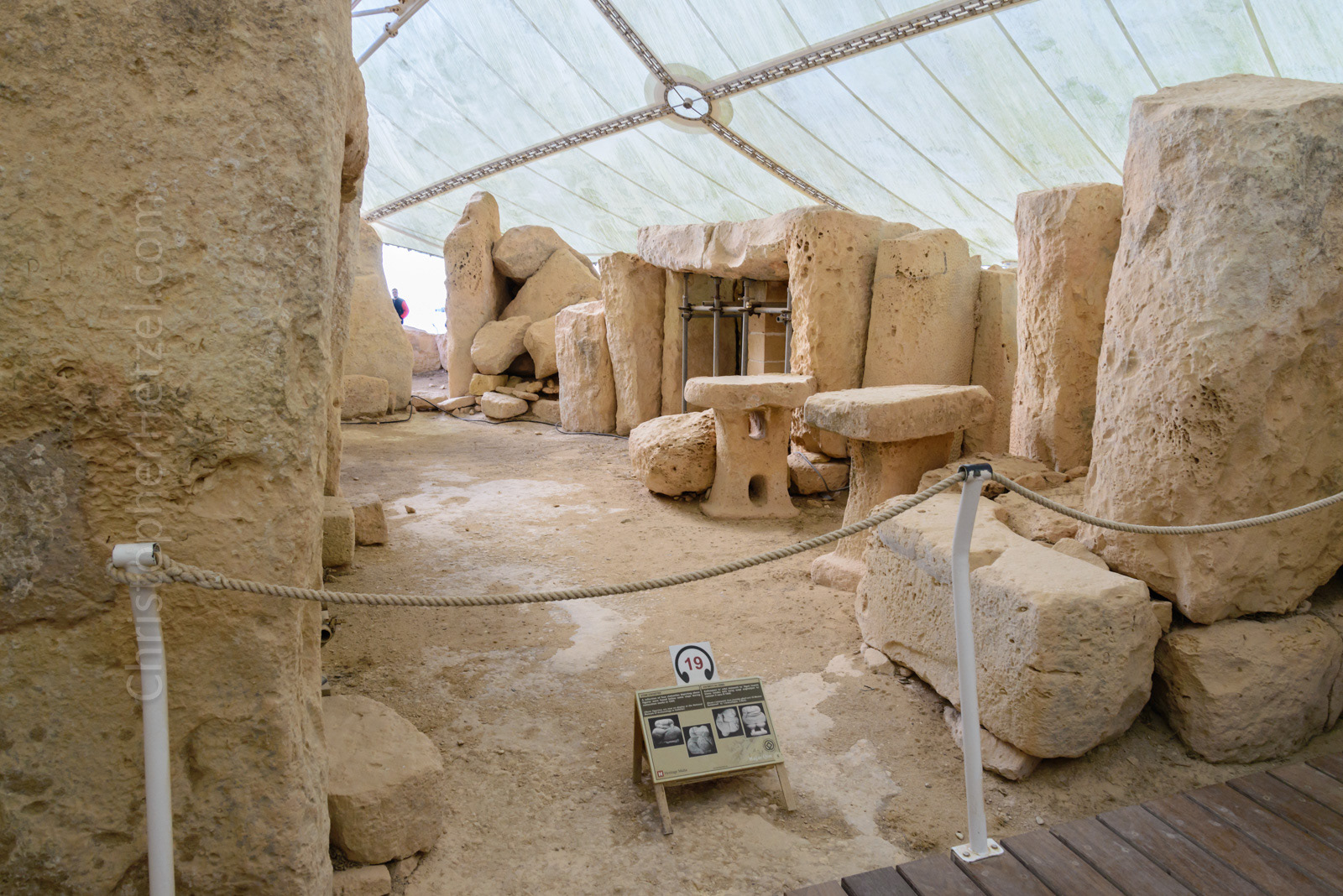
Astronomically aligned space in the temple at Ħaġar Qim. A collection of four obese, mother-goddess statuettes were found in this space during excavations in 1949.

An apse with a concave wall in Ħaġar Qim.
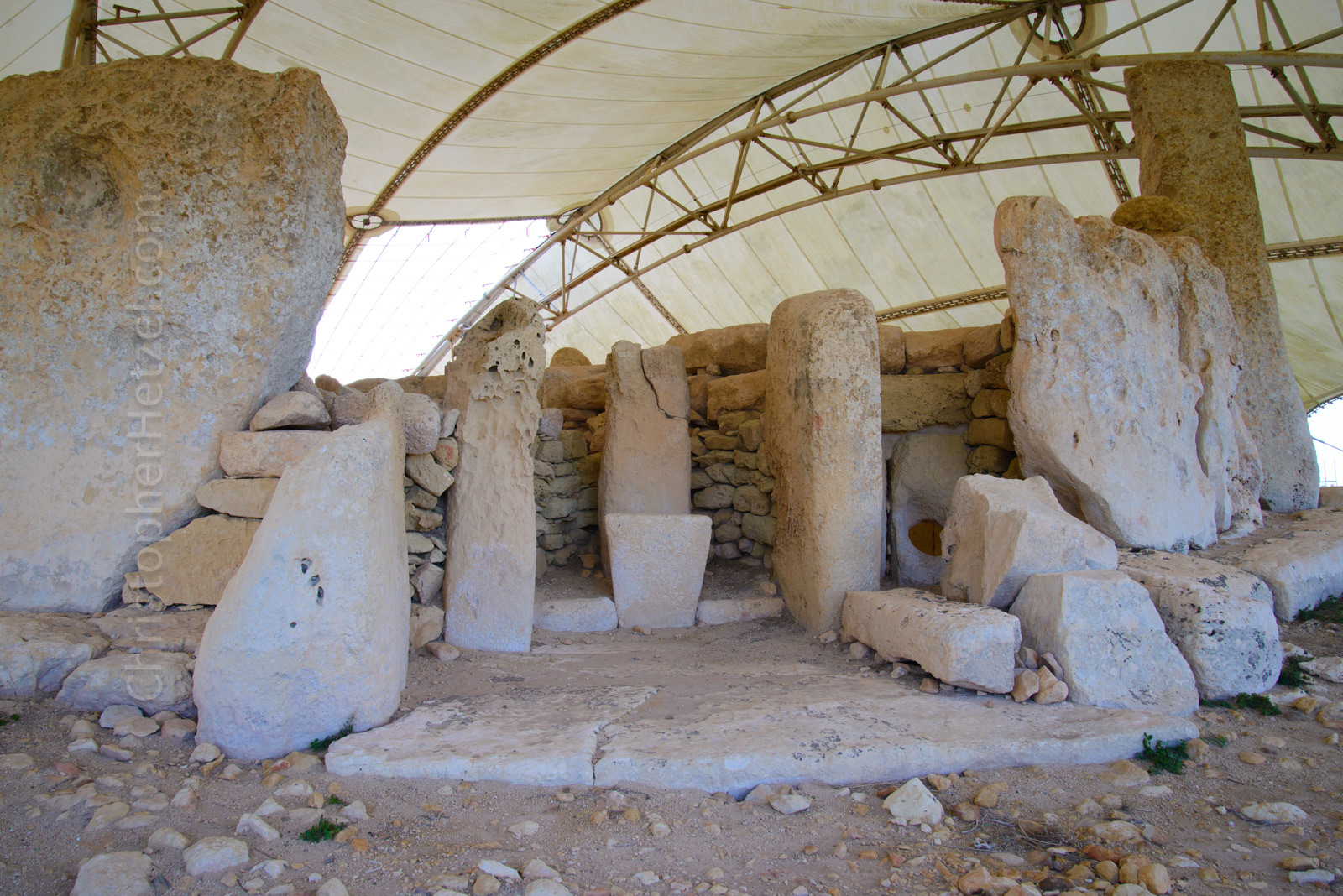
External niche with Columns and altar at Ħaġar Qim. To this right is the so-called "oracle hole" that connects it to the internal temple chambers.

A 20-ton, vertically placed stone.



The Mnajdra temple complex is approximately 500 meters down the hill from Ħaġar Qim.

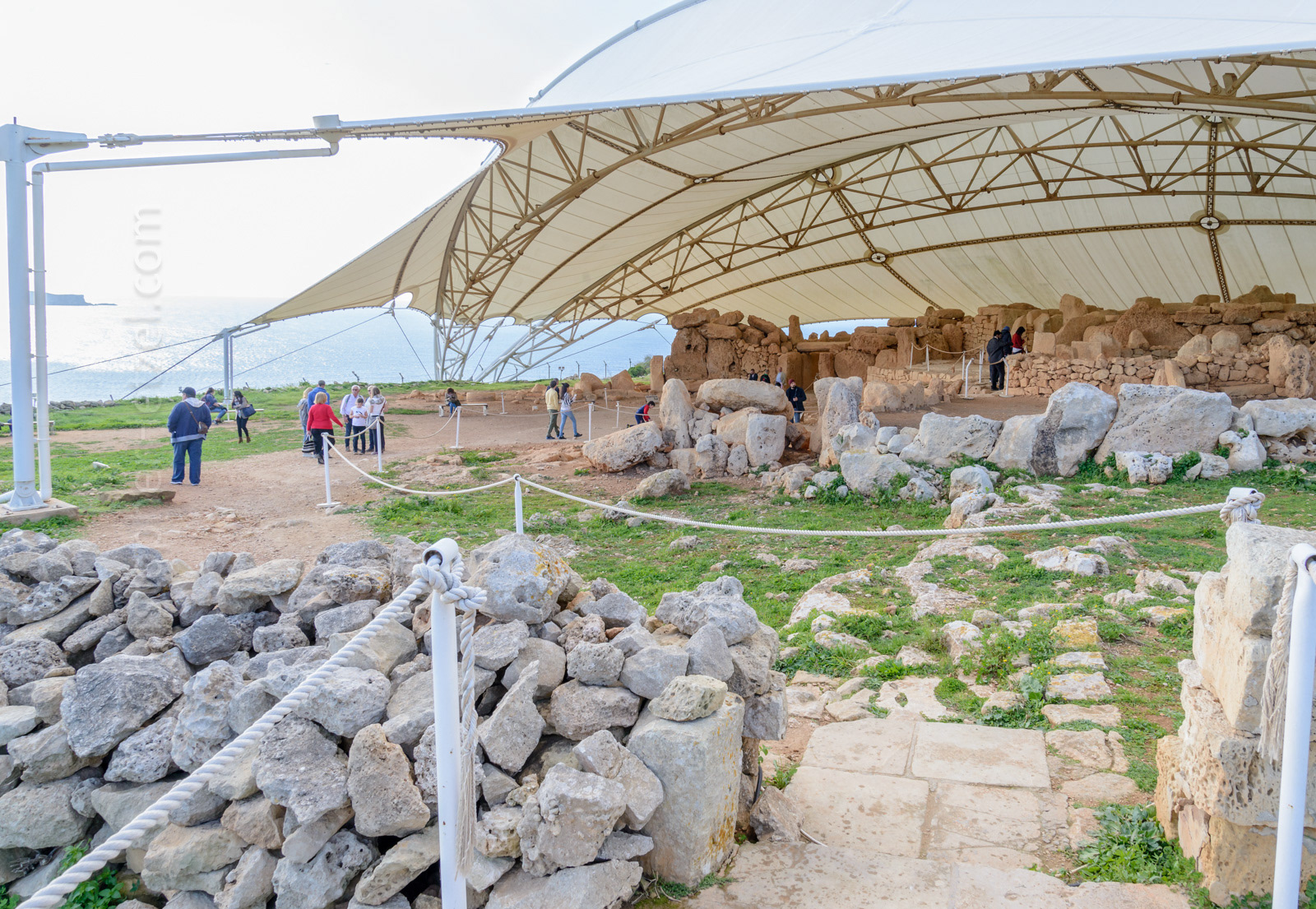
Mnajdra temple complex.

Concave facade of one of the temples of Mnajdra.

Tourist standing in front of one of the smaller temples at Mnajdra.

Central room in the Mnajdra temple complex.


Passage into the Mnajdra temple complex.



Rare Neolithic period carving, depicting the facade of a Mnajdra temple, showing its roof structure.

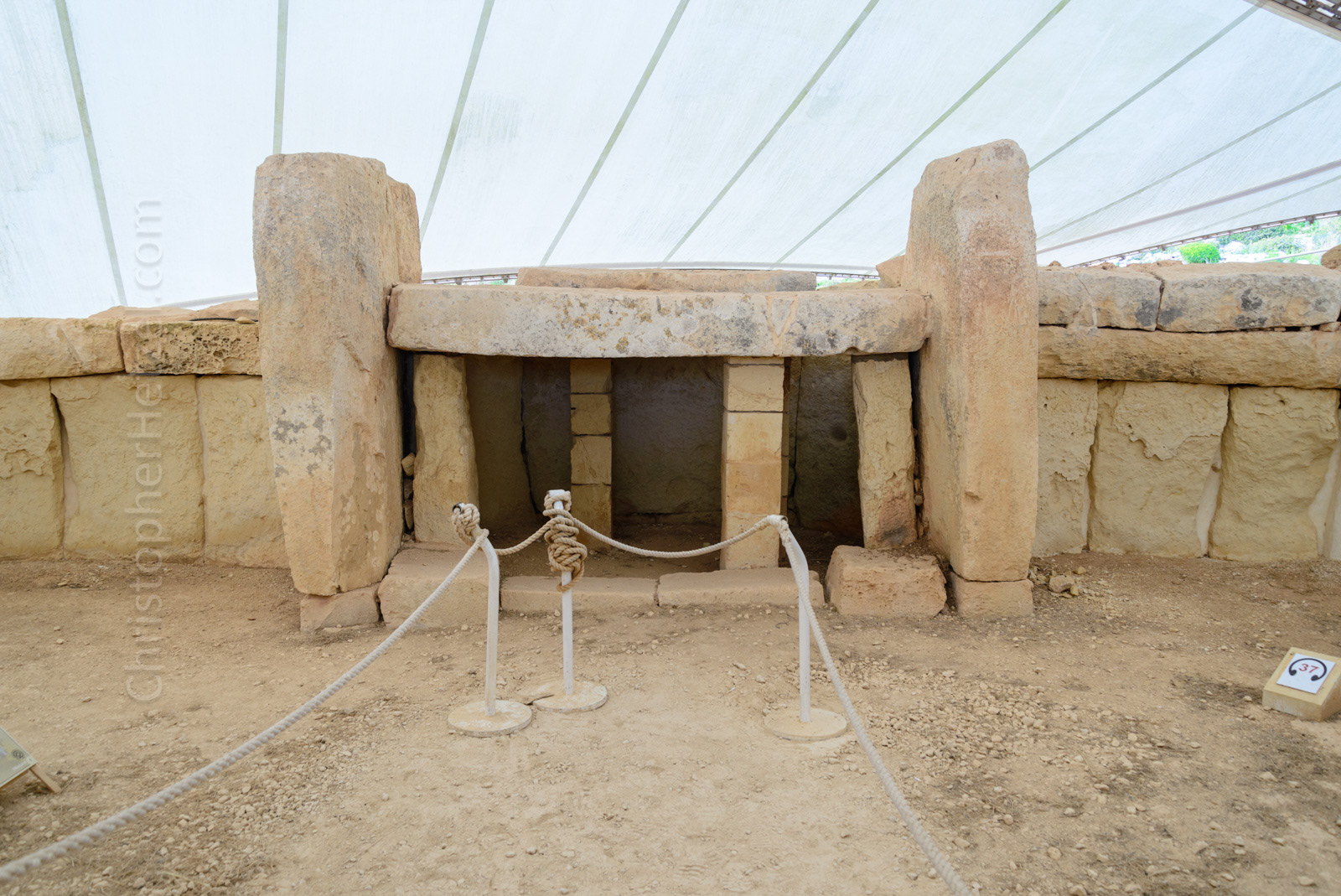
Return to Malta

